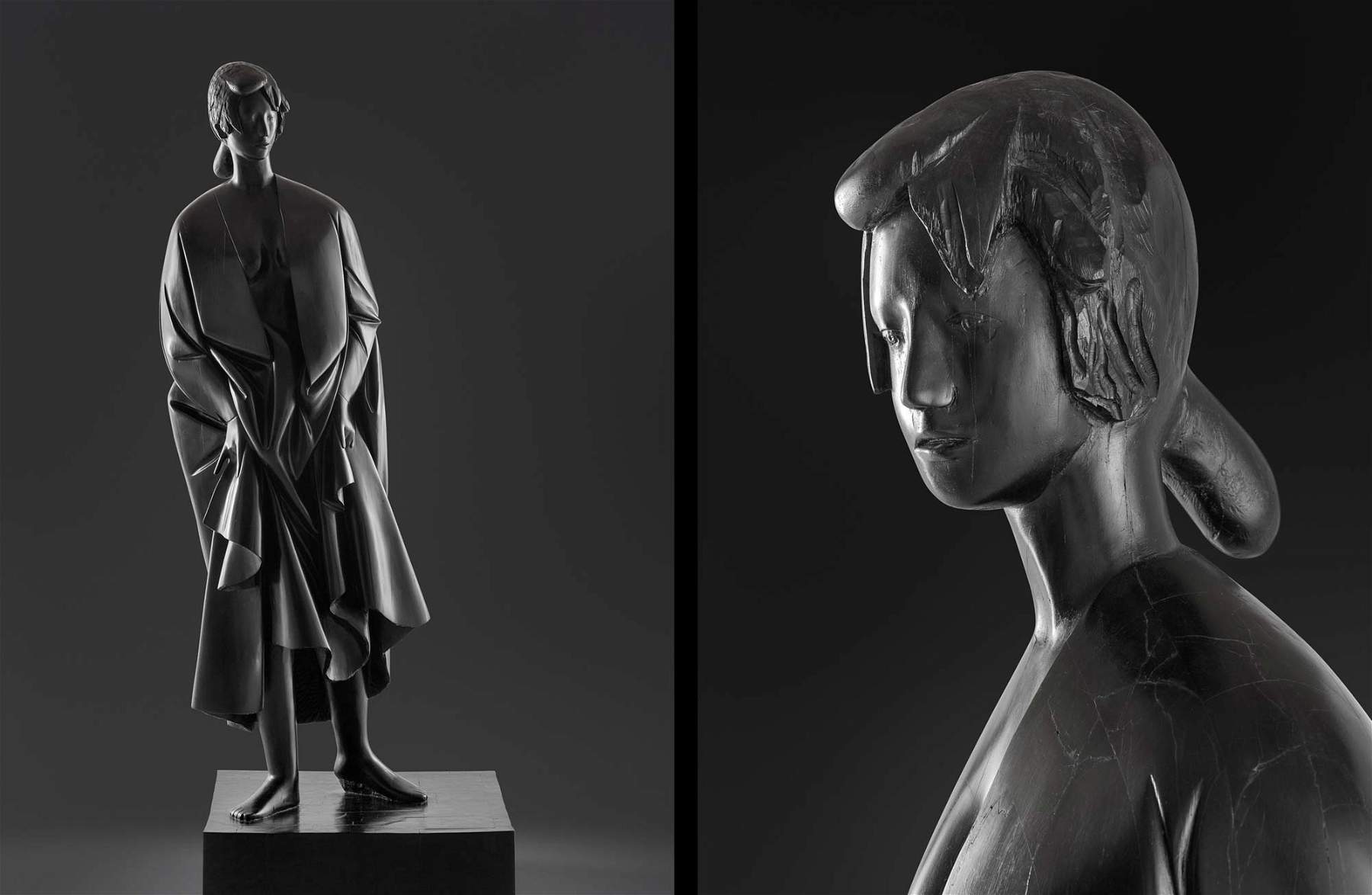A major retrospective dedicated to Giacomo Manzù: this is what Vercelli is offering from March 10 to May 21, 2023. The exhibition, curated by Marta Concina, Daniele De Luca and Alberto Fiz, is housed in the Arca space and the former church of San Vittore, and is organized by the City of Vercelli, Archdiocese of Vercelli, Studio Copernico in collaboration with the Manzù Foundation. The title chosen (in particular by Alberto Fiz) is Giacomo Manzù. The sculpture is a moonbeam, which takes up a quote by Cesare Brandi.
Brandi, a great interpreter of Manzù’s language, wrote in 1983, “sculpture revolves with many autonomous points of view all converging in a form that is open and closed, and in its statics is dynamic because of how it flows within itself with an Heraclitean fluency in which one cannot bathe twice.” The reference is to the series of works dedicated to the young model Thebes, but it can be extended to Manzù’s entire body of work, which has been able to combine the classical dimension with the naturalistic and phenomenological, finding since the 1930s its own autonomous expressive force.
The exhibition proposed in Vercelli brings together over thirty sculptures, some monumental, made available by the Manzù Foundation, the Copernico Studio and important private collectors. The path ranges from the 1940s to 1990, a year before his death where an emblematic testimony appears as the great sculpture of Ulysses, the eternal symbol of knowledge.
The exhibition, set up in the two venues, aims to highlight the actuality of a great master of plastic art by following the different themes that characterize his poetics. Thus, the choice of works allows us to appreciate female portraits, still lif es (just think of Chair with Lobster from 1966) as well as the famous Cardinals, his most famous series begun in the 1930s. “The first time I saw the Cardinals,” Manzù said, “was in St. Peter’s in 1934; they impressed me with their rigid, yet vibrant masses of complex spirituality. I saw them as so many statues, a series of aligned cubes, and the impulse to create in sculptures my own version of that ineffable reality was irresistible.” In the exhibition, alongside a number of historic bronze Cardinals from the 1940s, appears Great Seated Cardinal, a monumental work over two meters high modeled in 1983 from which emerges the hieratic component of the figure within rigid, synthetic forms resembling pyramids.
His wife Inge, whom he met in 1954 when Manzù was teaching at the Salzburg Academy and his muse ever since, is a constant in his portraiture, and on display in Vercelli is Bust of Inge, a rare marble work made in 1979 from which emerges an extraordinary vitalism with respect to a composition that takes on a circular form where the arms are arranged around the woman’s face. The union with Inge gave birth to their two children Giulia and Mileto, which became the occasion to create a series of sculptures on the theme of play: Giulia and Mileto in a carriage appears in the exhibition with the bronze sketch from 1967. These works are part of the Spielerei cycle where Manzù freely proposes a series of plastic inventions that in this case give him a way to make an archaic carriage dominated by a large wheel.
Experimentation also passes through Woman Looking, another monumental work dated 1983, 252 centimeters in height carved in ebony a material that as Manzù states “is beautiful, very hard, has like blood in its veins, it is worked like ice but is eternal,” a work present in ARCA already at the time of the presentation of the exhibition.
In such a multifaceted journey, mention should also be made of Faun modeled in 1968 where the attitude of the man with folded limbs expresses the power and energy of the body, as well as The Miracle of St. Blaise, a strongly intimist high relief in which a compassionate Cardinal makes an appearance. “From the Vercelli exhibition, therefore, emerge,” comments Alberto Fiz, “the different souls of a sculptor who, without rhetoric, became an interpreter of humanity, knowing how to grasp the profound sacredness even in the everyday: ’Manzù,’ Brandi writes, ’is in his time, out of his time, firmly anchored to those eternal values that he never forgot.’”
Image: Giacomo Manzù, Woman Looking (1976; ebony, 252 x 88.5 x 87 cm)
 |
| In Vercelli a major retrospective exhibition on Giacomo Manzù |
Warning: the translation into English of the original Italian article was created using automatic tools. We undertake to review all articles, but we do not guarantee the total absence of inaccuracies in the translation due to the program. You can find the original by clicking on the ITA button. If you find any mistake,please contact us.